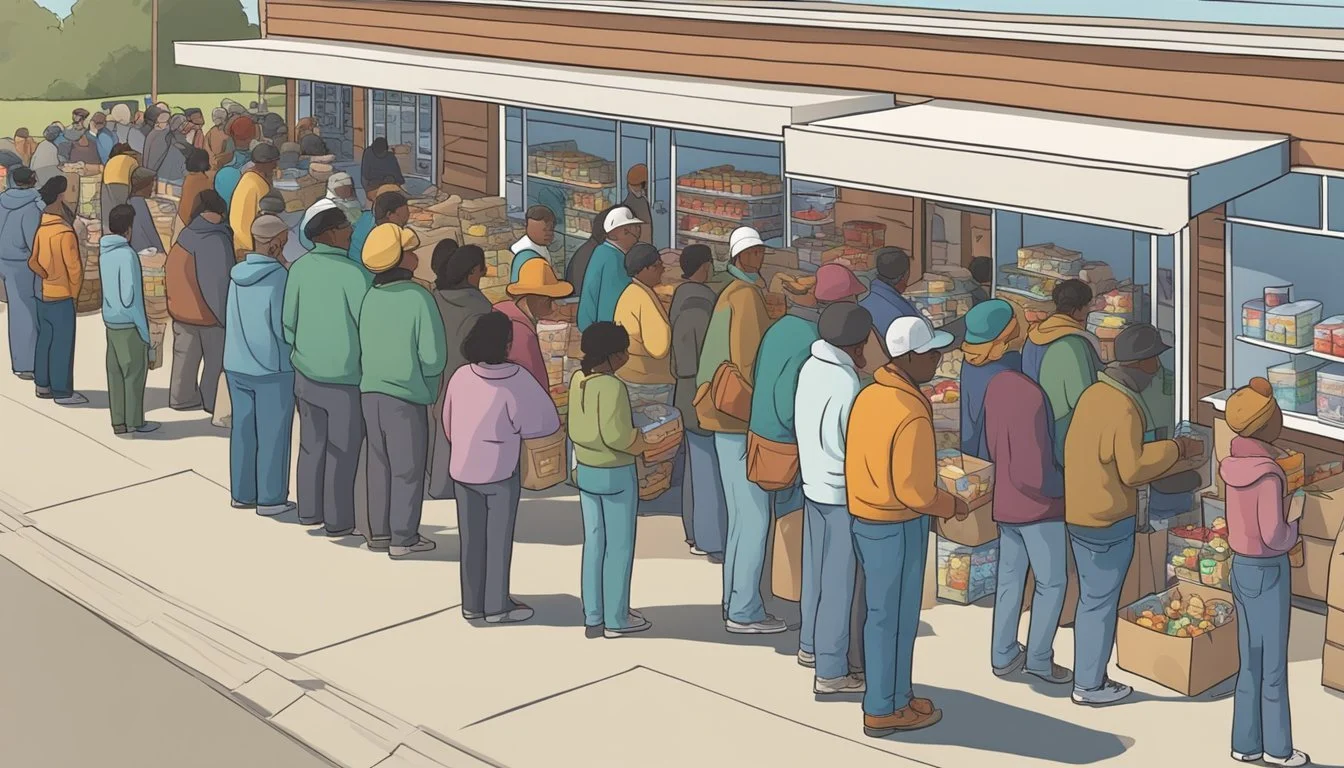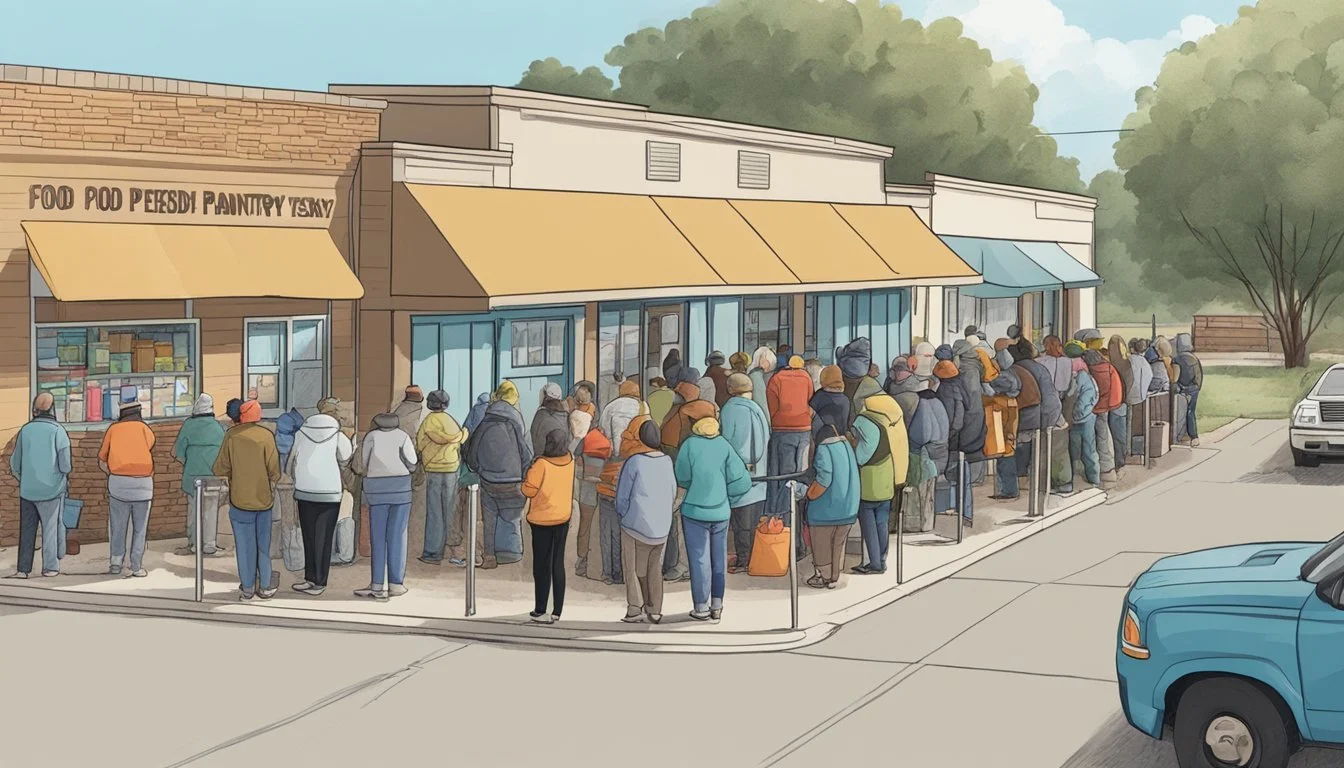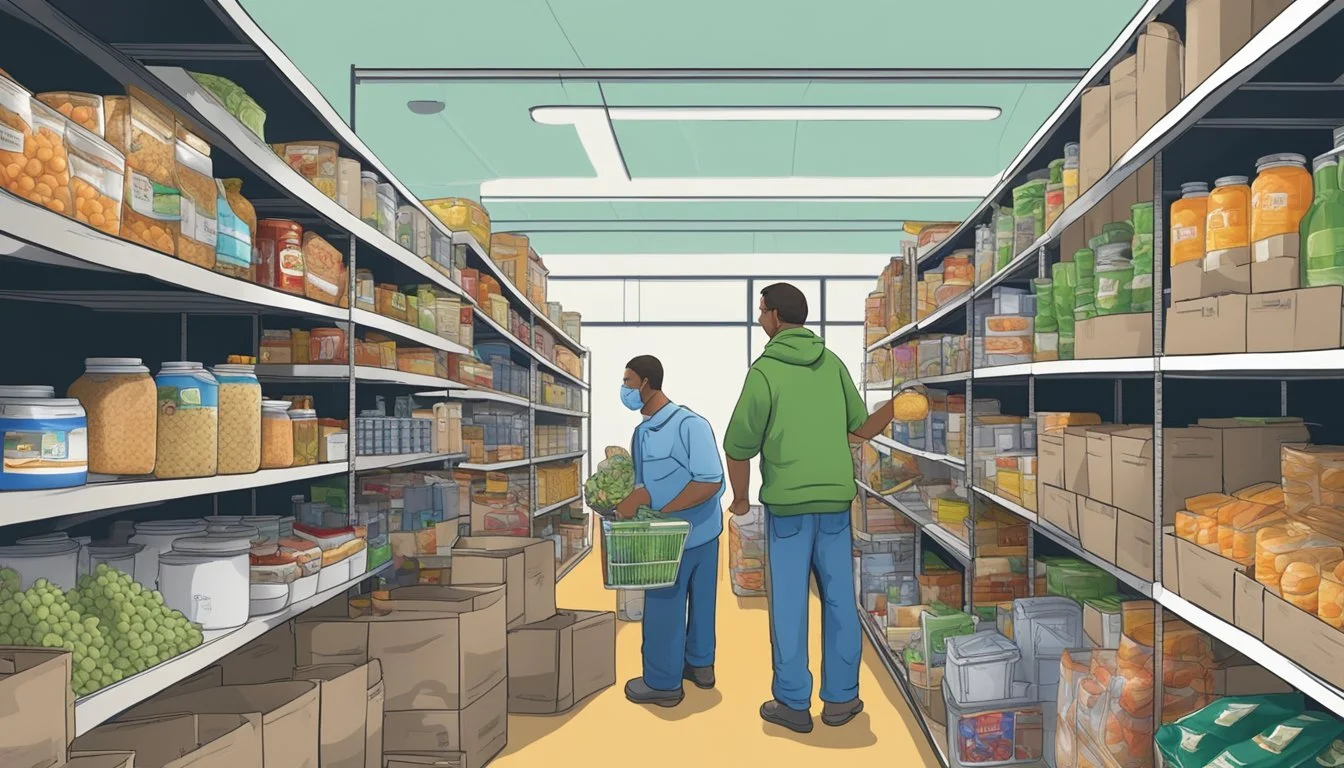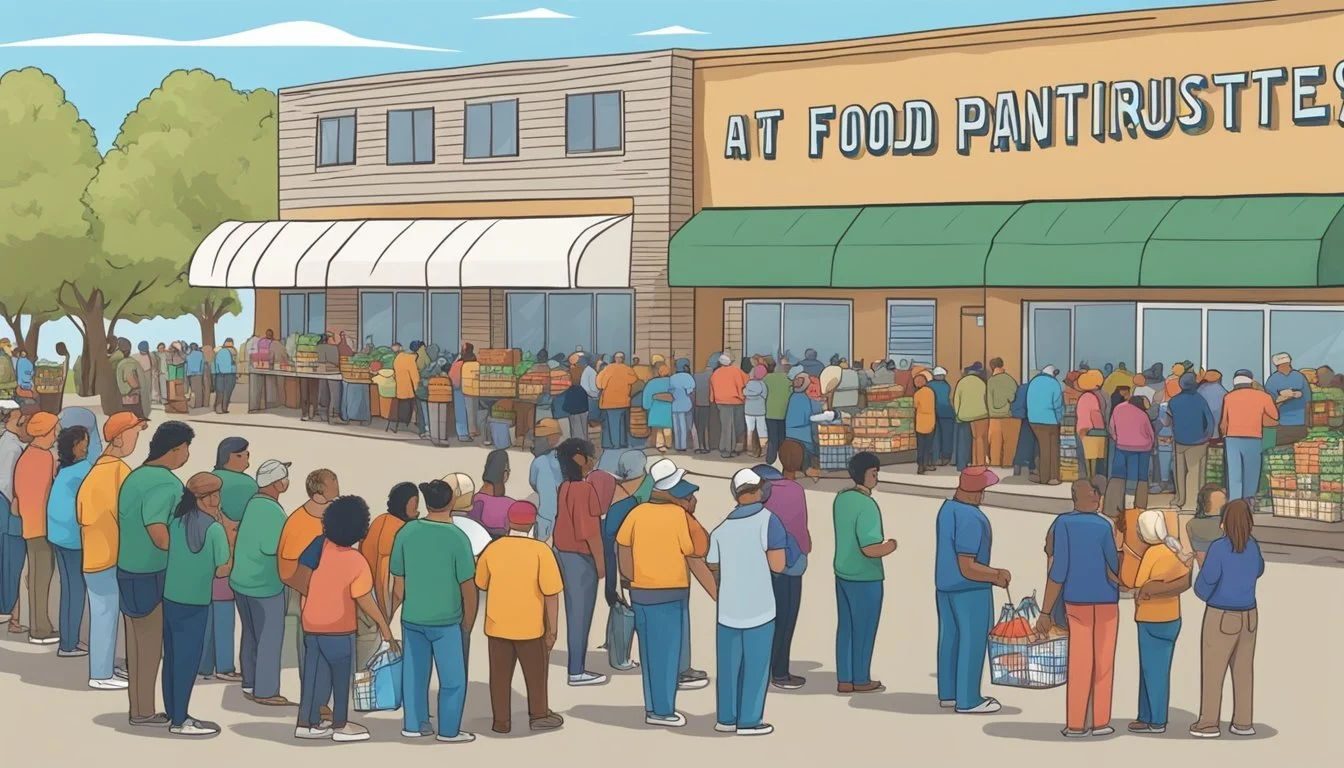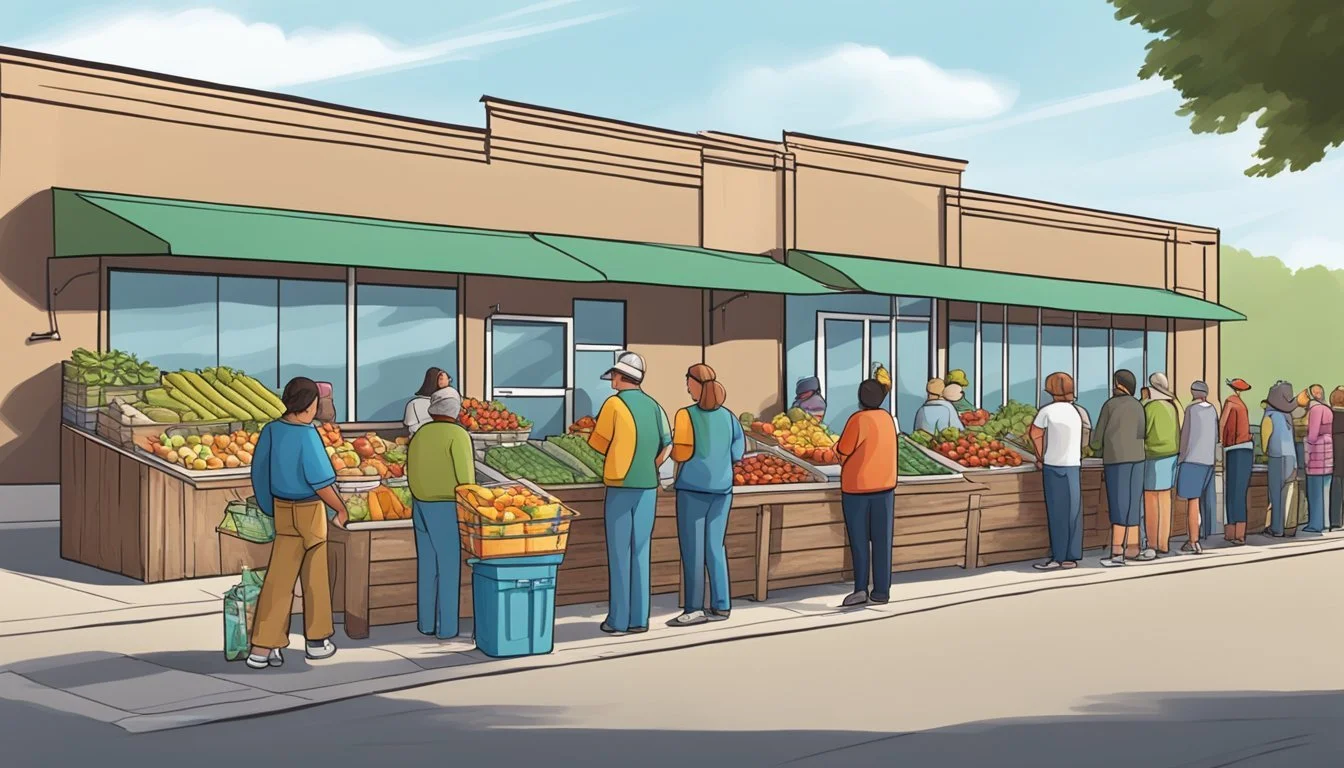Free Groceries and Food Pantries in Armstrong County, Texas
Your Guide to Local Food Assistance Programs
This Article is Part of Our Guide on Free Groceries in Texas
In Armstrong County, Texas, residents facing food insecurity have the advantage of accessing a network of free groceries and food pantries. These essential services are designed to provide nutritional support to individuals and families who may be experiencing temporary or long-term difficulties in purchasing enough food to meet their needs. The pantries not only serve as crucial resources for sustenance but also act as community hubs where residents can find a sense of togetherness and support.
The food pantries scattered across Armstrong County operate with the mission to alleviate hunger and offer food assistance to anyone in need. They are often stocked with a variety of items ranging from perishable products to non-perishable goods, ensuring a balanced diet for those they serve. With varying hours of operation and eligibility requirements, each pantry aims to accommodate as many people as possible, tailoring their services to the unique demographics and needs of the communities they support.
Residents can easily connect with these food assistance services through comprehensive guides or by contacting local food banks affiliated with national networks like Feeding America. These connections facilitate an efficient way for people to find the nearest pantry or mobile distribution site, ensuring that access to free groceries is just a phone call or a short drive away. Through these efforts, Armstrong County continues to strengthen its response to hunger, providing a safety net for its community members most in need.
Understanding Food Insecurity
Food insecurity significantly affects various communities across the United States, with places like Armstrong County, Texas, not being an exception. It's important to comprehend its definition and the impact it has within communities.
Defining Food Insecurity
Food insecurity occurs when individuals lack reliable access to a sufficient quantity of affordable, nutritious food. In the United States, it's often linked with challenges like poverty and unemployment. Specifically, in Armstrong County, struggles with food insecurity can largely be attributed to economic factors that hinder the ability of families to obtain enough food.
Impact on Communities
Food insecurity creates a ripple effect in communities, influencing not just hunger, but also health, education, and general quality of life. Studies show that economic downturns, like increased unemployment rates, can exacerbate the situation, leading to heightened reliance on food pantries and assistance programs to bridge gaps in food budgets. Community health is also affected, as food insecurity is associated with several health problems, particularly among children and the elderly.
Finding Local Food Assistance
In Armstrong County, Texas, residents facing food insecurity can turn to a variety of resources for support, including local food banks, pantries, and soup kitchens. These facilities collaborate to ensure that individuals and families have access to essential nutrition.
Local Food Bank Overview
The Feeding America network is the backbone of food assistance in the region, with a presence of local food banks delivering aid directly to those in need. Residents can search by zip code on Feeding America's website to find their nearest food bank. Each food bank works as a central hub, supporting various food pantries and emergency food sites across the county.
Accessing Food Pantries
Food pantries in Armstrong County offer a sustainable lifeline for families. Residents can obtain fresh produce, canned goods, and other groceries. To access these pantries, one may be asked to show proof of residence and meet certain eligibility requirements. Some pantries have set hours of operation, while others may operate through referral systems. It is recommended to contact the pantries directly for the most current information.
Distribution Sites: The county hosts multiple distribution points, with specific locations in:
Apollo
Brady's Bend
Elderton
Madison
Parker
(and many others).
Soup Kitchens in Armstrong County
For immediate food needs, soup kitchens provide ready-to-eat meals. These establishments are crucial during hardships, offering hot meals to anyone in need, no questions asked. The number and operational hours of soup kitchens might vary, so checking in advance is helpful. Entities like the Lemontree Directory might assist in locating the nearest soup kitchen.
Residents can connect with these compassion-driven services to find support and relief through tough times, whether they need a single meal or ongoing assistance.
How to Qualify for Free Food
In Armstrong County, Texas, individuals and families in need can access free food through various assistance programs, provided they meet certain eligibility criteria. These programs are designed to offer nutritional support to those who face food insecurity.
Eligibility Criteria for Assistance
To qualify for free food assistance, individuals typically need to demonstrate financial need. Most programs have established income guidelines, which are often based on a percentage of the Federal Poverty Level (FPL). For example, families with an income at or below 130% of the FPL may qualify for free groceries through local food pantries or community food distribution programs. Proof of residency within Armstrong County is usually required, as well as identification and possibly evidence of income.
Local food banks and pantries may have additional criteria or may offer assistance to those facing temporary hardship without strict needs testing. Individuals are encouraged to reach out directly to these organizations to learn about specific qualifications.
SNAP Benefits and How to Apply
The Supplemental Nutrition Assistance Program (SNAP), formerly known as food stamps, plays a critical role in providing food assistance. To apply for SNAP benefits in Armstrong County, individuals must have incomes that fall below specific thresholds, which are determined by household size and income.
To apply for SNAP Benefits:
Obtain an Application:
Applications can be acquired from the Texas Health and Human Services Commission (HHSC) or downloaded online.
Provide Required Information:
Applicants must fill out the application with accurate information regarding their financial situation, including all sources of income and household expenses.
Submit the Application:
Completed applications can be submitted online, by mail, or in person at a local HHSC office.
After applying, an interview will be scheduled to verify the information on the application. Once approved, recipients will receive an Electronic Benefits Transfer (EBT) card, which can be used to purchase eligible food items at authorized retailers.
Resources and Services
In Armstrong County, Texas, residents facing food insecurity have several reliable avenues to obtain free groceries and meals. These resources are distributed through coordinated efforts between government programs and community-based initiatives.
Government and Non-profit Support
The government provides assistance to individuals and families in need via programs like SNAP (Supplemental Nutrition Assistance Program). Local food banks also play a crucial role in distributing necessary provisions to those that qualify. These food banks are often sustained by both government funding and private donations, ensuring a steady supply of food.
Key resources:
SNAP benefits
Food banks
Community Outreach Programs
Community programs in Armstrong County include a network of food pantries and soup kitchens which offer ready-to-eat meals and groceries. Various non-profit organizations and local churches run these programs, providing a lifeline of support to many. In addition to physical locations, drive-thru pantries have emerged as a convenient service model, allowing residents to receive food without leaving their cars.
Services available:
Food pantries (Location and hours vary)
Drive-thru pantries (Search by zip code for nearest option)
Locating Food Assistance Near You
In Armstrong County, Texas, individuals in need can locate vital food assistance programs by implementing specific search strategies and utilizing zip code tools to readily find local help.
Search Strategies for Food Resources
When seeking free groceries or food resources in Armstrong County, it's crucial to employ targeted search strategies that yield accurate results. Starting with Feeding America's website can lead one to a network of member food banks, food pantries, soup kitchens, and mobile pantries. Another valuable approach is reaching out to local community centers and churches, as they often have information on nearby food assistance programs.
Using Zip Codes to Find Help
Utilizing one's zip code is a highly efficient way to pinpoint food assistance in Armstrong County. Services like Feeding America’s “Find Your Local Food Bank” tool allow individuals to enter their zip code and discover nearby food banks and pantries. This method filters search results to the most relevant locations, offering immediate and accessible support.
Operational Details of Food Aid
In Armstrong County, Texas, individuals in need can access food aid through various programs offering groceries and meals. Ensuring that food assistance is available and accessible is paramount for community support.
Hours of Operation for Food Services
Food service programs in Armstrong County typically operate on a schedule designed to accommodate a wide range of individuals, including those who may be working or have other daytime commitments. The following are common hours of operation:
Food Banks: Tuesday to Thursday from 10 am to 2 pm.
Emergency Food: Available 24 hours through specified hotlines or centers.
SNAP Offices: Monday to Friday from 8 am to 5 pm.
Operating hours may vary by program and are subject to change.
Contacting Food Assistance Centers
For individuals seeking food assistance, establishing contact with the appropriate centers is crucial. Contact information for these centers includes:
Phone Numbers: A direct line for inquiry and assistance, often listed on agency websites.
Email Address: An option for those who prefer electronic communication or require documentation.
Where available, online forms on official websites enable requests for assistance or more information. Physical addresses are essential for in-person visits to offices or specific program locations. It's recommended to verify the latest contact details through official sources to avoid outdated information.
Contribution and Volunteering
Community support through contributions and volunteering is essential for food banks, food pantries, and soup kitchens to serve those in need in Armstrong County.
How to Contribute to Food Banks
Individuals and organizations wishing to support food banks can contribute in multiple ways. Monetary donations are critical, as they allow food banks to purchase specific food items in bulk and address immediate needs. Potential donors can contact a food bank directly to understand the best way to contribute funds. In-kind donations of non-perishable food items are also valuable. Contributors can often find a list of needed items on a food bank’s website or by calling them. Those interested in adding a listing or partnering with a food bank for large-scale donations should get in touch with the food bank’s donor coordinator.
Monetary Donations: Contact food bank for details
In-Kind Donations: Check the needed items list
Adding a Listing or Partnership: Coordinate with the donor relations department
Volunteering at Food Pantries and Soup Kitchens
Volunteers form the backbone of food pantries and soup kitchens, providing essential services such as food sorting, distributing groceries, and preparing meals. Individuals can become volunteers by applying through the specific organization's website or by visiting the location. Food pantries might also offer volunteer orientation sessions to familiarize new helpers with their operations. Soup kitchens, on the other hand, may require volunteers to help with meal preparation and serving guests. It is important for volunteers to be reliable, as these entities count on their support to operate smoothly.
Food Pantries: Sort and distribute groceries
Soup Kitchens: Prepare and serve meals
Becoming a Volunteer: Apply online or visit in person
Understanding Food Distribution
Food distribution is a critical system designed to ensure access to food for those who are facing food insecurity. This network involves various organizations coordinating to provide necessary food and groceries.
The Process of Food Distribution
Food distribution is a systematic process of getting food from donors to the tables of individuals in need. It typically begins with food collection where donors, which may include farms, retailers, and individuals, provide food items to distribution centers. At these centers, food is sorted, stored, and eventually distributed to food pantries and soup kitchens. Individuals seeking assistance can then receive this food directly from these local centers.
Food banks are central to this network; in Armstrong County for example, residents have access to food pantries that form part of the larger distribution process.
Collection: Sourcing food at minimal cost or through donations.
Storage: Safekeeping of food in a controlled environment.
Distribution: Transportation of food to local pantries and distribution points.
Local agencies may also take advantage of economies of scale, purchasing food at greatly reduced costs, further stretching the impact of donations.
The Role of Feeding America in Distribution
Feeding America plays a pivotal role as a national organization overseeing a vast network of over 200 food banks and 60,000 food pantries and meal programs across the country. It provides logistical support, guidance, and resources allowing for a more efficient and wide-reaching distribution network.
Feeding America also assists with:
Finding Food Pantries: Offering tools such as zip code locators to connect individuals with nearby food distribution services.
Federal Food Assistance Programs: Helping individuals navigate and apply for federal assistance such as SNAP benefits.
By connecting various food banks and pantries, Feeding America ensures a cohesive operation, minimizing food waste and maximizing availability of resources to those in need.

